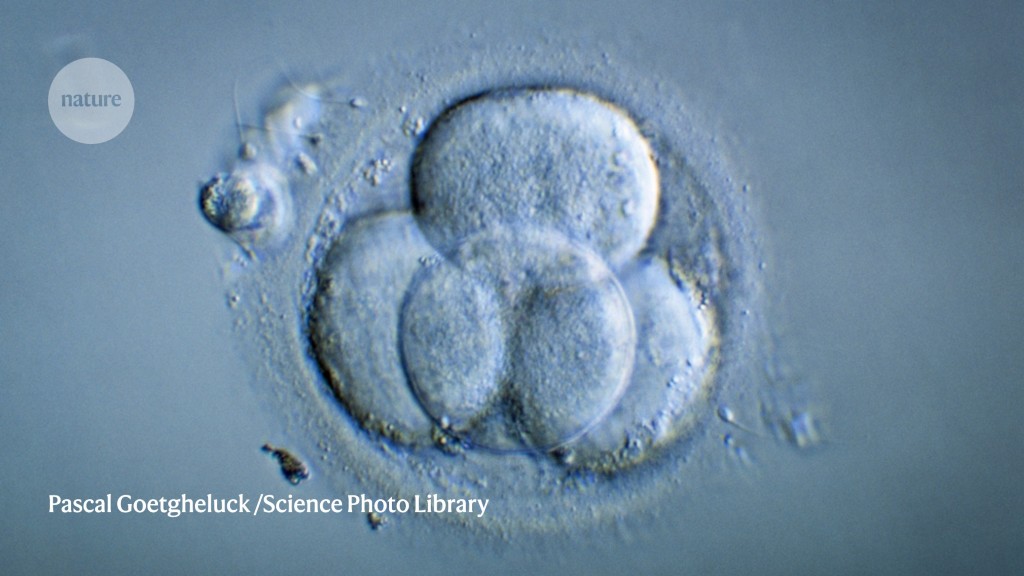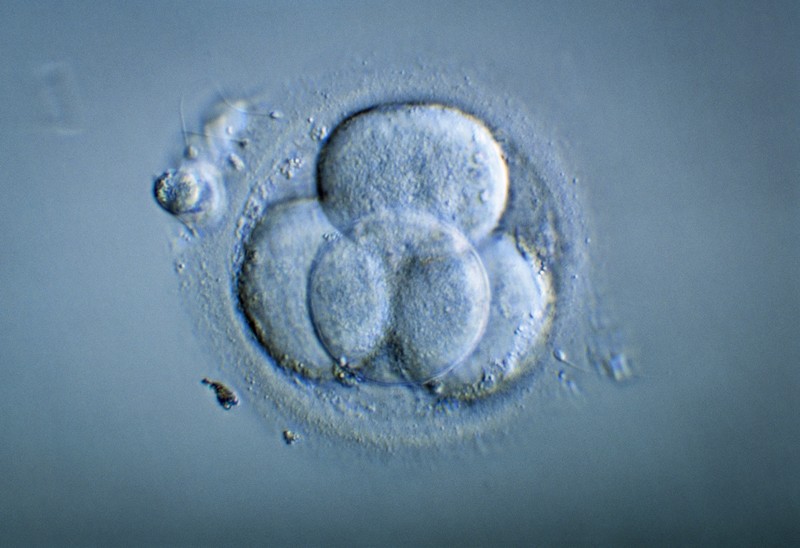When the first baby to be conceived using a technique that mixes genetic material from three people was born, in 2016, scientists worried that the procedure had not been studied to show it was safe. Now, scientists in China have conducted the first comprehensive study of the technique in early-stage human embryos, and report that it does not seem to affect their development1.
Techniques for using genetic material from three people to make embryos are designed to prevent mothers with defects in their mitochondria — the organelles that provide cells with energy — from passing them on to their children. Mitochondria contain their own DNA, and children inherit all of their mitochondria from their mother.
“Mitochondrial replacement therapy is a controversial field,” says study co-author Wei Shang, an obstetrician and gynaecologist at the Chinese PLA General Hospital in Beijing. “With our research, we hope to provide a foundation for the development of the technique.”
Spindle transfer
Shang and her colleagues studied the safety of one of three main types of mitochondrial replacement therapy, called spindle transfer, which was used to make the first baby with genetic material from three people, who was born in Mexico in 2016. In this method, the nuclear DNA from the egg of a woman with faulty mitochondria is transferred to a donor egg with healthy mitochondria that has had its nuclear DNA removed. The egg is then fertilized with the father’s sperm in a test tube. The resulting embryo contains genes from both parents in addition to mitochondrial genes from the donor.
As part of the study, the team compared dozens of human embryos that underwent spindle transfer with a control group of embryos. Both sets of embryos were allowed to develop for up to one week after fertilization. The researchers found that cells from a five-day-old ‘blastocyst’ in both groups had almost identical levels of gene expression and transcription, suggesting that spindle transfer does not seem to affect early embryonic development. The authors reported their findings in PLoS Biology last month1.
“This is the first [study] that has performed such a comprehensive comparison of human embryos that were created with spindle transfer,” says Dietrich Egli, a stem-cell biologist at Columbia University in New York City. He adds that the work is “unique and fabulous” for its high quality and the amount of data it provides. Egli says that the safety of spindle transfer was expected — because of evidence from previous animal studies and the healthy child born in 2016 — but not conclusively shown until now.
Mitochondrial diseases
About one in 5,000 children are born with diseases caused by harmful mutations in their mitochondrial DNA. The faulty genes can lead to problems in many organs including the heart and the brain. So far, mitochondrial replacement therapy seems to be the most effective way of blocking these genes from being passed down to offspring, Egli says.
But Min Jiang, a mitochondrial biologist at Westlake University in Hangzhou, China, says that the long-term impacts of mitochondrial replacement therapy remain unclear. With current techniques, a small amount of the mother’s mitochondrial DNA will be inadvertently carried over into the donor egg, usually accounting for less than 2% of the embryo’s total mitochondria. Shang says they have improved the technique to keep that level “almost undetectable”, but Jiang warns that research suggests that the proportion of maternal mitochondrial DNA might increase as cells develop2, increasing the offspring’s risk of developing mitochondrial diseases.
“The maternal mitochondria and nucleus have coexisted for a long time, so maybe the nucleus may prefer maternal mitochondria over the donor’s as the embryos develop,” Jiang says, adding that the interaction between the two organelles requires more research. “So far, the studies show spindle transfer works. But the long-term health of children born using the therapy will need to be investigated with clinical trials,” she says.
Highly regulated
Only a few countries, including the United Kingdom and Australia, have approved mitochondrial replacement therapy. The technique is banned in the United States; in China, its use as a treatment for infertility was prohibited in 2003, but the government has not specified whether the method is banned as a way to prevent children from inheriting mitochondrial diseases.
Shang says the team had planned to conduct clinical trials of mitochondrial replacement therapy in China. Chinese law does not explicitly prohibit such trials. But the team shifted its focus to collecting more safety data in the laboratory in the aftermath of the ‘CRISPR baby’ scandal. In 2018, Chinese scientist He Jiankui shocked the world when he announced that he had used the gene-editing technique CRISPR–Cas9 to genetically edit the DNA in embryos later implanted into a woman. International scientists widely condemned He’s use of CRISPR in embryos as risky and unethical, and He was jailed for conducting an illegal medical practice.
Egli says the safety study on spindle transfer will provide important evidence to help regulators in countries where the process is not allowed make an assessment of its safety and efficacy. “It can really help advance the field,” he says.








More News
Author Correction: Stepwise activation of a metabotropic glutamate receptor – Nature
Changing rainforest to plantations shifts tropical food webs
Streamlined skull helps foxes take a nosedive